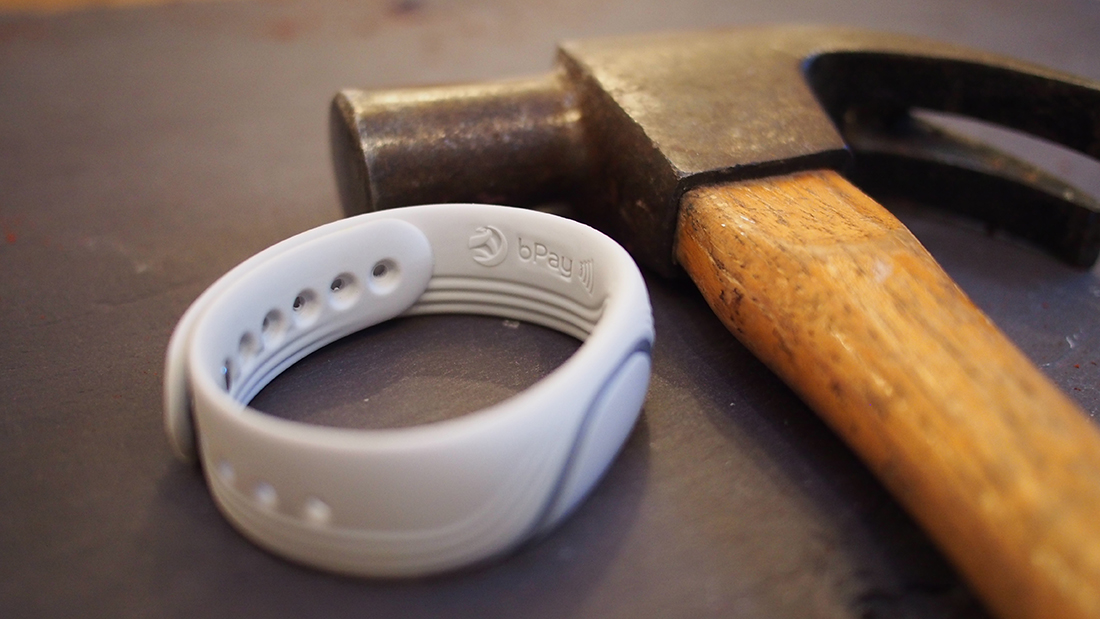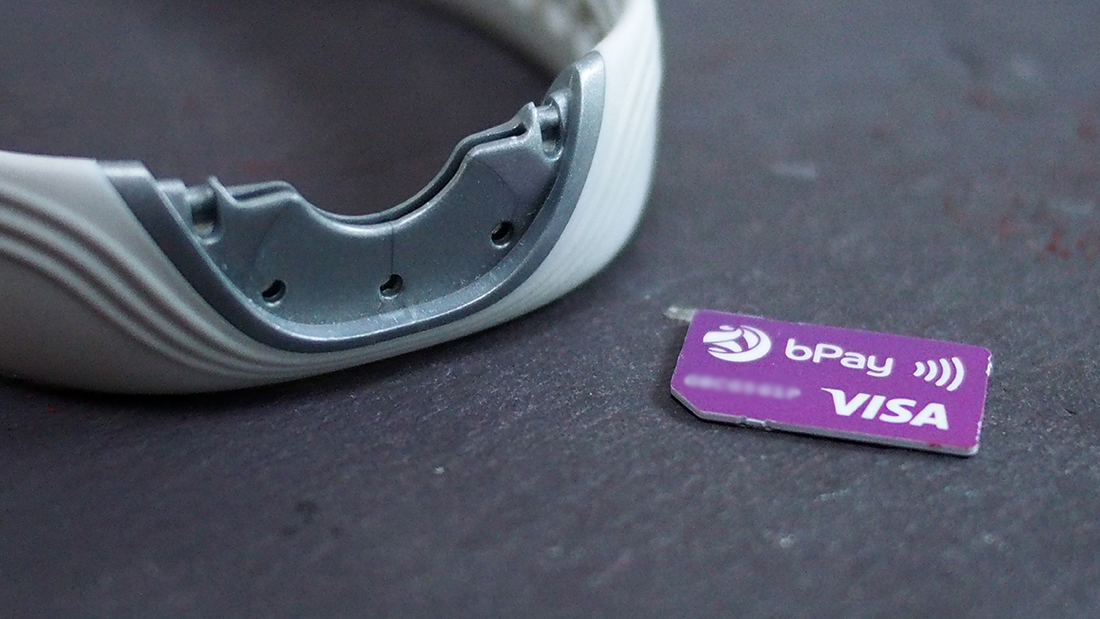

Reviewing gadgets can be a dangerous business, you can crash cars, drown while testing a GoPro, or drop a 50-inch television on your toes, it's a hazardous profession.
But it's never been humiliating before, not until I began testing the Barclays bPay Band.
(N.B. This is not a review, it's my experience as a reviewer -- I didn't read the instructions).
The wearables market is only just taking off, and people need a reason to adopt them. Going wallet free is a big selling point, that's why there's been a fuss around the launch of Apple Pay.
But similarly, people only need one bad experience to persuade them wearables aren't for them, and I've had several of these experiences recently.
The bPay Band is a second-generation wearable from Barclaycard, it allows you to pay for items under £20, just by tapping your wrist to contactless payment terminal -- at least in theory.
I received the bPay devices on my desk one morning, downloaded the app and proceeded to set it up, adding my card details and topping up my 'digital wallet' with £20. I added two devices, a bPay Band and bPay Sticker (a fatal mistake, I later discovered).
Sign up to the T3 newsletter for smarter living straight to your inbox
Get all the latest news, reviews, deals and buying guides on gorgeous tech, home and active products from the T3 experts
I strapped the band around my wrist (it's much more flexible and, as a consequence, comfortable than the previous bPay Band) and headed out to lunch.
I went to the pub conveniently located around the corner from the office and ordered an orange juice (it was a work day after all). The bartender poured the drink, then waited for payment -- this is where the first moment of awkwardness arose.
Usually, a bartender can preempt how you'll pay, by judging what you pull from your wallet. With a contactless payment device, you just stand there and need say something along the lines of, "Can I pay with contactless payment?"
Then comes another odd moment, paying with a Watch, band or anything other than a card or cash is still noteworthy and futuristic. So the bartender asked 'Is that Apple or Android?'
I replied, 'It's neither', as I touched it to the contactless terminal, it beeped.
Success! I thought, until I the terminal then read, 'Card Declined, Payment Terminated'. Now, time to try again, or opt for a more traditional method of payment? I opted for the second option, and reasoned the band still needed time to activate.
That was it for the first day of testing, I'm not about to start touring the local pubs of Paddington on the world's most boring non-alcoholic bar crawl.
The next day I tried to buy lunch from a busy Tesco, with my phone at the ready to film the transaction.
Same result as the day before, I could feel the cold stare of hungry lunch-goers burn into the back of my head as they wondered why I was still filming the payment terminal.
"Trouble is, I've now got £20 invested in this 'digital wallet' and no way of accessing it"

If testing this device wasn't my job, I'd have given up at this point and either asked for a new device or a refund, but the trouble is, I've now got £20 invested in this 'digital wallet' and no way of accessing it.
The next day I try again, this time in a Boots. It was a busy Saturday and there's a long queue but only one till open, my items got scanned and I asked if I can pay with contactless payment.
Preempting a problem I told the cashier that it's been a bit problematic and hasn't worked so far -- then tapped my wrist to the payment terminal.
Failure, again, but this time on a more monumental scale, the cashier said, "Well this hasn't happened before, it looks like I'll have to restart my till."
"If everyone could go downstairs you'll have to pay there." The sighs of ten angry shoppers was audible, and you could physically feel the hatred.
Now came another problem, do I join the rush downstairs and join the new queue, or wait? I chose neither option, walked out of sight, dumped my shopping and left in shame.
At this point I decided to open up the app again and investigate the problem. The setup seemed very simple -- add the code from your bPay device and add funds to your digital wallet. What I didn't realise is that by adding two separate bPay devices I created two different wallets, only one of which had funds in.
As a result the bPay Sticker wallet was ready and raring to go with £20 of hard earned dosh in, while the bPay Band wallet was empty, and that's what was causing the problems.
Since I realised (and fixed) the mistake I've been hard at work contactless-ly paying for things around London, almost going wallet free (well, leaving my wallet in my backpack at least).
What has this taught us? If your mobile phone doesn't work it doesn't become a public event, but if wearable payment systems, for whatever reason, don't work, it can become more of a problem.
This can present itself in numerous ways -- many people are complaining Apple Pay is too slow on the London Underground.
I'm a tech journalist, I don't read manuals. Yes, this caused a problem this time, but it all worked out in the end and I learned my lesson (but I still probably won't read the manual of whatever I get next).
My situation is unique, because, as Barclaycard are keen to point out, most consumers will only be buying one bPay device, and therefore this problem shouldn't arise.
Full review to follow.

As the Style and Travel Editor at T3, Spencer covers everything from clothes to cars and watches to hotels. Everything that's cool, stylish, and interesting, basically. He's been a part of T3 for over seven years, and in that time covered every industry event known to man, from CES and MWC to the Geneva Motorshow and Baselworld. When he's driving up and down the country in search of the greatest driving roads, he can be found messing around on an electric scooter, playing with luxury watches, or testing the latest fragrances.

